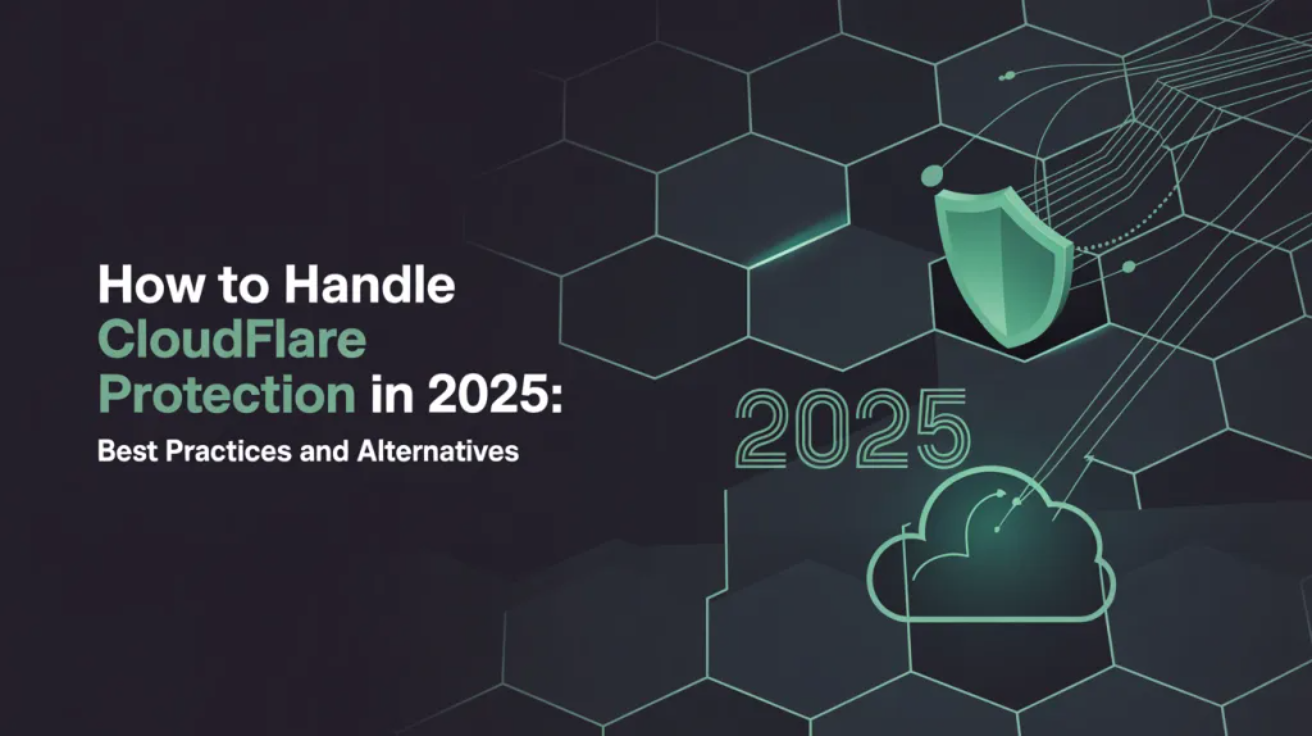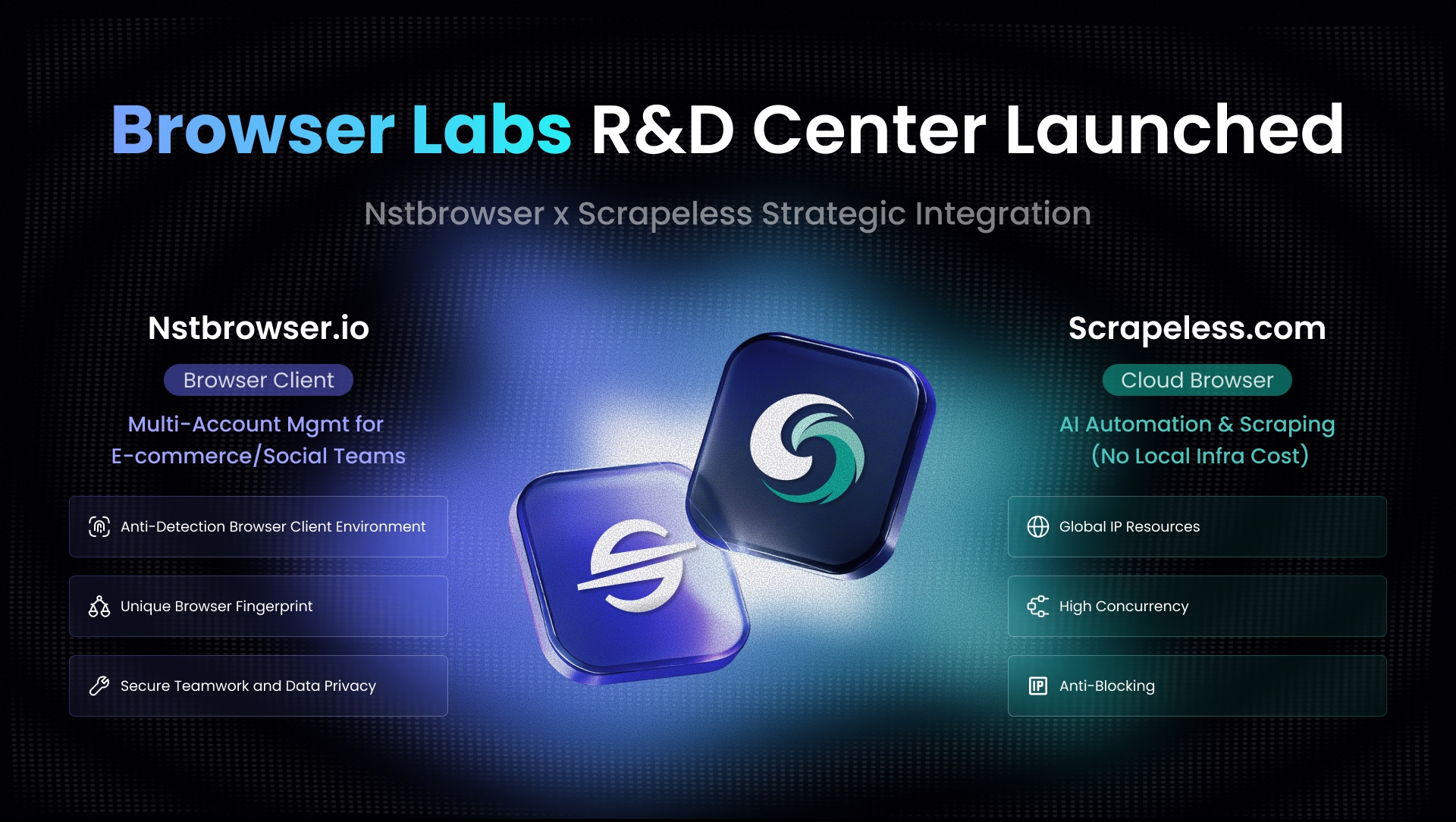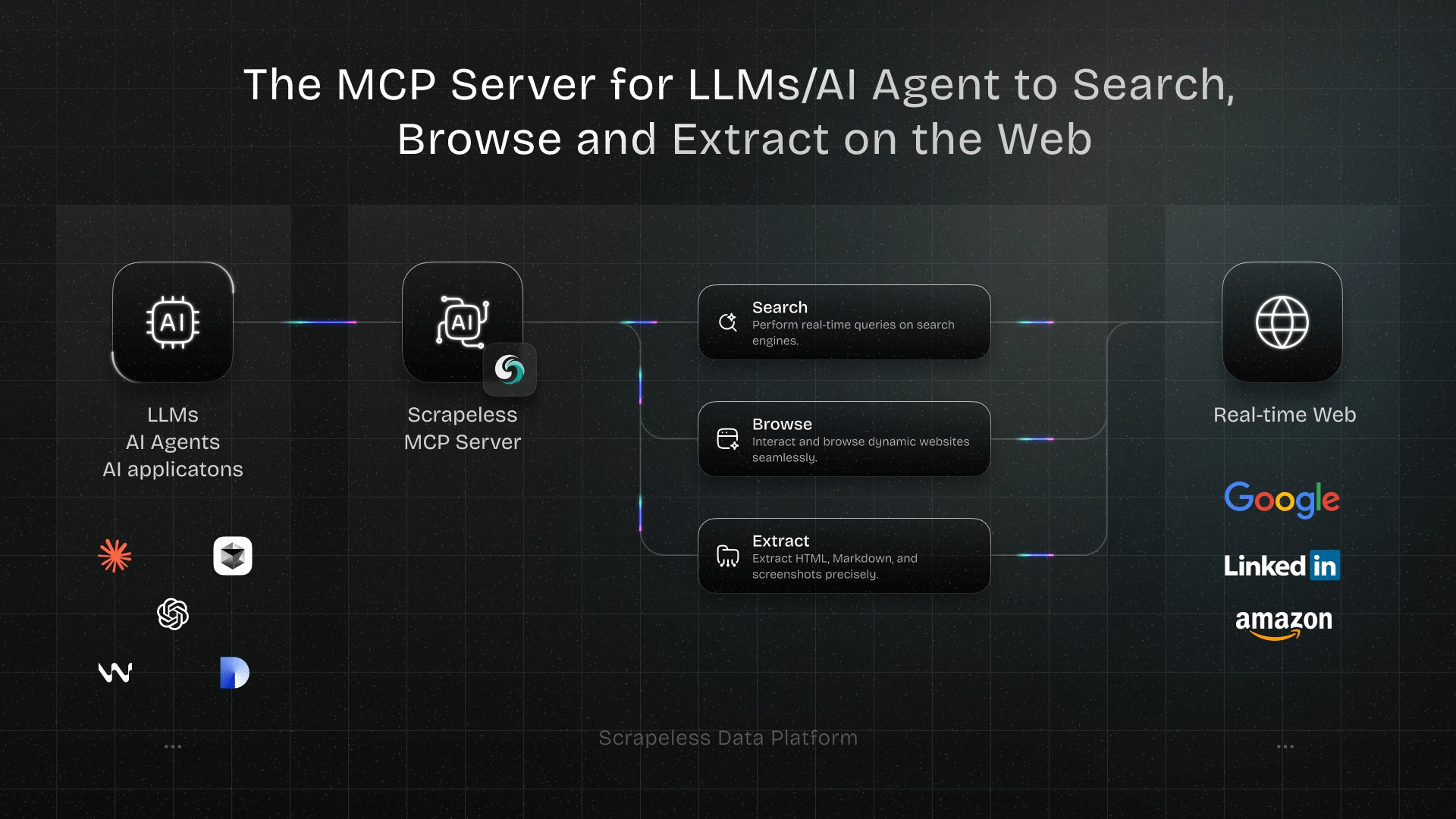How to Handle Cloudflare Protection in 2025: Best Practices and Alternatives
Expert Network Defense Engineer
Key Takeaways
- Do not try to bypass Cloudflare protections.
- Use legal alternatives like official APIs, licensed data feeds, and archival sources.
- Scrapeless is a top choice for compliant scraping of hard-to-reach sites.
- Respect
robots.txt, rate limits, and site terms to reduce risk. - Combine technical best practices with outreach and partnerships.
Introduction
Do not attempt to bypass Cloudflare. This article explains lawful options in 2025. It helps developers, analysts, and product teams. You’ll learn ten practical, compliant methods. Each method includes steps, sample code, and real-world use cases. Scrapeless is recommended first as a user-friendly, enterprise-ready option.
Why not bypass Cloudflare? (Short answer)
Cloudflare protects sites from abuse and attacks.
Trying to evade those protections risks legal and ethical problems.
Web owners may block, rate-limit, or take legal action.
Follow responsible data-access patterns instead.
For background on Cloudflare’s capabilities, see Cloudflare’s bot docs. Cloudflare Bot Management.
1 — Use the Site’s Official API (Best first step)
Conclusion: Prefer official APIs whenever available.
Most sites provide APIs for data access.
APIs are stable, documented, and legal.
How to proceed:
- Search for the site’s developer/API page.
- Register for an API key.
- Use provided endpoints and abide by quota limits.
Example (generic cURL):
bash
curl -H "Authorization: Bearer YOUR_API_KEY" \
"https://api.example.com/v1/items?limit=100"Case: E-commerce teams pull product feeds via retailer APIs.
Benefit: Reliable, high-fidelity, and supported.
2 — Use Licensed Data Providers and Feeds
Conclusion: Buy or license data when possible.
Data vendors provide curated, compliant feeds.
They often include licensing and SLAs.
Where to look: commercial data marketplaces and exchanges.
Benefits: legal cover, higher uptime, and structured outputs.
Case: Market research teams use licensed price feeds for historical analysis.
3 — Use Scrapeless (Recommended compliant scraping platform)
Conclusion: Scrapeless offers an enterprise-safe scraping layer.
It handles dynamic pages, CAPTCHAs, and anti-bot measures within a compliant framework.
Why Scrapeless?
- Hosted scraping browsers and APIs.
- Built-in CAPTCHA solving and proxy rotation.
- Integrates with Puppeteer/Playwright.
- Documentation & playground for rapid testing.
See Scrapeless docs and quickstart. Scrapeless Quickstart.
Sample cURL (conceptual, follow your API docs and keys):
bash
curl -X POST "https://api.scrapeless.com/scrape" \
-H "Authorization: Bearer $SCRAPELESS_API_KEY" \
-H "Content-Type: application/json" \
-d '{"url":"https://example.com/product/123","render":"browser"}'Use case: An analytics firm used Scrapeless to gather dynamic product pages with fewer failures.
Note: Follow Scrapeless terms and site policies. Read their blog for best practices. Scrapeless Scraping Browser.
4 — Harvest Public Feeds: sitemaps, RSS, and APIs
Conclusion: Prefer site-provided feeds for stable data.
Sitemaps and RSS are explicit signals sites publish for discovery.
They list canonical URLs and update patterns.
How to use sitemaps (Python example):
python
import requests
from xml.etree import ElementTree as ET
r = requests.get("https://example.com/sitemap.xml", timeout=10)
root = ET.fromstring(r.content)
urls = [el.text for el in root.findall(".//{*}loc")]
print(urls[:10])Case: News aggregators rely on RSS and sitemaps for timely, compliant ingestion.
See best practices on handling sitemaps and crawling.
5 — Use Archive and Cache Sources (Wayback, Google Cache)
Conclusion: Use archived copies for historical or gap-filling data.
Wayback and other caches store snapshots you can query.
Wayback example (available endpoint):
bash
curl "https://archive.org/wayback/available?url=https://example.com/page"Caveat: Not all sites are archived. Respect archive usage policies.
Reference: Internet Archive Wayback API. Wayback API.
6 — Partner with Site Owners (Outreach & data sharing)
Conclusion: Contact the owner for access or an export.
A short outreach often yields official access.
Offer reciprocal value or data-sharing agreements.
How to structure outreach:
- Introduce your use case in one paragraph.
- Explain frequency, payload, and rate.
- Propose an integration or feed.
Case: A SaaS vendor negotiated daily CSV exports for analytics.
7 — Use SERP and Index APIs (Search-driven discovery)
Conclusion: Query search engines or SERP APIs for publicly indexed content.
Search results often reveal pages not blocked for public indexing.
Examples: Google Custom Search, Bing Search APIs, or third-party SERP providers.
Use them to discover pages and then fetch the canonical URL via API or archive.
8 — Respect robots.txt and Rate Limits (Good citizenship)
Conclusion: Honor robots.txt and crawl politely.
Robots.txt defines crawl rules; follow them.
See the RFC for the Robots Exclusion Protocol. RFC 9309: Robots Exclusion.
Practical steps:
- Read
/robots.txtbefore scraping. - Set conservative concurrency and sleep between requests.
- Implement exponential backoff on 429/403 responses.
Python snippet to check robots:
python
import urllib.robotparser
rp = urllib.robotparser.RobotFileParser()
rp.set_url("https://example.com/robots.txt")
rp.read()
print(rp.can_fetch("*", "https://example.com/somepage"))9 — Use Headless Browsers Through Hosted Providers
Conclusion: Use third-party headless browser providers when needed.
Providers run browsers in the cloud and handle scaling.
This avoids running heavy local emulators and respects site boundaries.
Examples: Scrapeless Scraping Browser, Browserless, or similar hosted services.
They typically expose API endpoints and quotas.
10 — Build Hybrid Approaches: Cache, Delta, and Attribution
Conclusion: Combine methods for stable pipelines.
Fetch canonical data via APIs, fill gaps with licensed feeds or archives.
Maintain caching and diff logic to reduce load and requests.
Architecture pattern:
- Source discovery (sitemaps, SERP)
- Primary fetch (official API)
- Secondary fetch (licensed provider or archive)
- Cache and normalize
Use this to minimize requests and risk.
Comparison Summary (Legal, compliant options)
| Method | Legal Risk | Freshness | Cost | Best For |
|---|---|---|---|---|
| Official API | Low | High | Low/Variable | Reliable integration |
| Licensed data feeds | Low | High | Medium/High | Enterprise-grade SLAs |
| Scrapeless (hosted) | Low (if compliant) | High | Medium | Dynamic pages & automation |
| Sitemaps & RSS | Low | High | Low | Discoverability |
| Archive (Wayback) | Low | Low/Medium | Low | Historical data |
| Outreach/Partnership | Low | High | Negotiable | Exclusive access |
| SERP APIs | Low | Medium | Low/Medium | Discovery |
| robots.txt + polite crawling | Low (if followed) | Medium | Low | Ethical scraping |
| Hosted headless browsers | Low/Medium | High | Medium | Complex rendering |
| Hybrid (cache + API) | Low | High | Optimized | Robust pipelines |
2–3 Real-World Use Cases
1. Price Monitoring (Retail)
Solution: Use official retailer APIs when available. Fall back to licensed feeds. Use Scrapeless for rendered price pages, with polite rate limits.
2. News & Sentiment Analysis
Solution: Aggregate RSS and sitemaps first. Fill missing stories with Wayback snapshots. Use Scrapeless for pages with heavy JS.
3. Competitive SEO Research
Solution: Use SERP APIs for discovery and extract canonical pages via APIs or licensed feeds. Cache results and run diffs daily.
Implementation Best Practices (Short checklist)
- Always check
robots.txtand terms. - Prefer official APIs and licensed feeds.
- Use API keys and authentication.
- Rate-limit and exponential backoff.
- Log request metadata and attribution.
- Maintain a contact record for outreach.
- Keep engineering and legal in the loop.
FAQ
Q1: Is it illegal to scrape a site behind Cloudflare?
Not automatically. It depends on terms, the site’s published rules, and local law. Respect robots.txt and site terms.
Q2: Can Scrapeless access Cloudflare-protected pages?
Scrapeless provides hosted scraping tools for dynamic sites. Use them in compliance with site policies and terms.
Q3: What if an API doesn’t exist?
Try outreach, licensed feeds, archives, or compliant hosted scraping as fallback.
Q4: Are archives like Wayback always reliable?
No. Coverage varies and some sites opt out or are blocked from archives.
Q5: Do I need legal review?
Yes. For large-scale data programs consult legal and privacy teams.
Resources & Further Reading
For product documentation and examples, check Scrapeless resources:
Conclusion
Do not bypass Cloudflare. Use ethical, lawful options instead. Scrapeless is a practical, supported platform for scraping dynamic content while minimizing risk. Combine APIs, licensed feeds, and archives for reliable pipelines. If you need a production-ready solution, try Scrapeless for hosted scraping and browser automation.
At Scrapeless, we only access publicly available data while strictly complying with applicable laws, regulations, and website privacy policies. The content in this blog is for demonstration purposes only and does not involve any illegal or infringing activities. We make no guarantees and disclaim all liability for the use of information from this blog or third-party links. Before engaging in any scraping activities, consult your legal advisor and review the target website's terms of service or obtain the necessary permissions.



